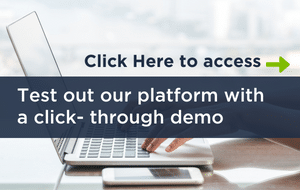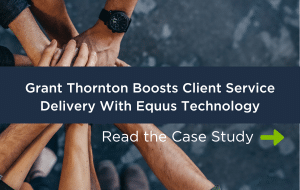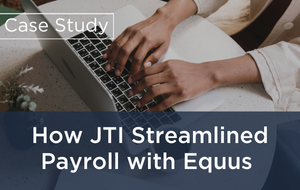The rapid transformation of global mobility (GM) after the COVID-19 pandemic has led to an exciting but critical moment in the sector, and a new approach to managing an evolving mobile workforce is required. With this in mind, Gareth Davies, Vice President of Technology Solutions at Equus spoke to Paul Gucciardi, HR IT Systems Senior Manager at IBM, and Anna Potter, Head of Americas Hub, HR Global Mobility Services at Continental, about global mobility related challenges and opportunities within their businesses.
Gareth: Hi Paul, hi Anna. To kick this off, what are the goals and challenges for your business regarding global mobility and technology?
Paul: Hi Gareth. At IBM, we’re constantly transforming and trying to look for better ways to process data—we’re trying to be cost-efficient. We’re also trying to simplify our processes. Our GM program is rather large, but it has three main models: traditional international assignments, relocation, and a host country model that we manage day in and day out. Because of the nature of mobility, it can sometimes be difficult, but we’re embracing technology, not just IBM’s technology, but the technology that our business partners and service provider’s use.
Paul: For example, we’re making an effort to move domestic relocation to the Equus Platform. Using IBM’s technology, we are employing some AI in the process. We’re in a constant mode of transformation. We’re trying to simplify and automate for cost efficiencies wherever we can. We’re not looking for unique, one-off solutions because that can make it harder to integrate and troubleshoot.
Gareth: Anna, what goals and challenges are you facing?
Anna: Continental’s tag is “the future of mobility” so we try to be forward-thinking in our global mobility strategy as well. We have about 200,000 employees worldwide. Since COVID-19 broke out, mobility accelerated for the every-day employee, not just assignees and international transfers. So, we’re looking for a tool that we can leverage for the entire population of 200,000 employees for other mobility types that are emerging such as limited remote work programs, whether that’s international, domestic-only, or regional. We’re starting to roll those out and are noticing very quickly that the workflow tool that we’re using doesn’t have a lot of visibility.
Anna: Continental has a large assignment population of between 600 and 1,000 at any given time over the last five years. Within these, there’s the emergence of a lot of other arrangements such as extended or intermittent business travelers. Right now, we’re using the technology of our relocation provider, but then we have to manually engage our tax provider if tax issues are triggered, so we don’t have a central place to see those.
Gareth: Anna, you talked about 600-1,000 more traditional, long-term moves. What’s next on your agenda? What internal processes do you need to go through to start using the Platform and functionality?
Anna: Our board is not currently looking to entertain permanent work-from-anywhere policies; however, they do want to entertain limited remote work. In the United States, we have quite a few Indian and German nationals in our company who have, for example, elderly parents or family who they want to keep in touch with and extend vacation time with some work time. They’re not looking to move permanently but are looking to extend remote working for a limited time of up to 20 days per year to allow that extra flexibility.
Anna: That is the tone that the company wants to set: providing additional flexibility with our mobility policies. We all enjoy the flexibility, but it got quite loose during the COVID-19 pandemic, so we want to put a framework in place to try to be as transparent and compliant as possible.
Gareth: What’s next for IBM when looking at mobility types, Paul, and how are you going to go about it?
Paul: To pick up where Anna left off, we’re definitely addressing the remote worker. We have documented a framework and are looking to use The Equus Platform to manage that program and assignment type for us. But more than that, what we’re trying to do is enhance our data analytics by having all the data in one tool. With this approach, we can expand the analytics we can undertake and look at cost containment and optimization, as well as doing more profiling. Who are the people that want to work remotely? What age groups? Why are they choosing to be remote?
Paul: It’s not necessarily an open-door policy as to who can perform their jobs remotely. We do need a framework in place for tax and compliance reasons. But that’s only one step. The other step is trying to have a single point of entry rather than going to separate tools for all assignment types. We started building that recently.
Gareth: It was a seismic shift for Equus to rebrand from AssignmentPro to the Equus Platform, and to a single point of entry with one platform to manage all move types. Do you see this as supporting your global mobility goals?
Paul: It does, and it does this for a couple of reasons. If you put yourself in the shoes of the assignee, they don’t have to stop and think, and say “oh I need tool A to do this, tool B to do that, tool C to do something else.” With one tool, they naturally know where to go to handle anything to do with mobility. The single point of entry makes everything so much easier.
On the support side, what Anna and I are doing with our mobility teams, makes it more efficient to manage the program. If there is a point of failure, we’re only dealing with one or two tools. Thirdly, the integration with other corporate systems like HR and payroll is a lot easier.
Gareth: Anna, what direction are you going in? How do you see the Equus Platform supporting these?
Anna: Like Paul was saying, the single point of entry is ideal. As global mobility professionals, we understand the difference between all the mobility types like limited remote work, permanent remote work, virtual assignments, etc. The business does not know the difference, they just want to get someone from A to B and leave it to us to handle it.
That’s when the assessments come to me, and they can range from employee-facing in terms of compliance, or business-driven requests, like when assessments need to be tweaked. That’s where I see the greatest opportunity for us: to have these scenarios come to us, to figure out what they’re asking for and see if we can support it. My job is to understand what the business needs and, from an employee attraction and retention policy, what we can give them—without spending thousands of pounds on each assessment.
Currently, our processes are too confusing and segregated, with not enough visibility for everyone that needs to be involved. So, the single point of entry simplifies this for everyone, instead of having to chase our tail trying to get manual approvals.
Gareth: How excited are you about the world of mobility? And what keeps you awake at night trying to find ways to make this work for your business?
Anna: I’m excited! It’s injected more creativity and higher-level discussion than I’m used to having—it’s a much more interesting dialogue for me. I see the benefits of providing more employee flexibility and being more holistic. I like having those more strategic and open conversations.
Paul: I am excited too, maybe because of my IT background, but we’re taking a function—mobility or domestic transfers—which can be very intensive and complicated, and simplifying it with technology to take it to the next level. If we have the right tools, we can mitigate all the risks of audits, tax issues and immigration issues, so the right technology means nothing keeps me up at night!
Click here to learn more about managing all types of employee mobility in the Equus Platform.













